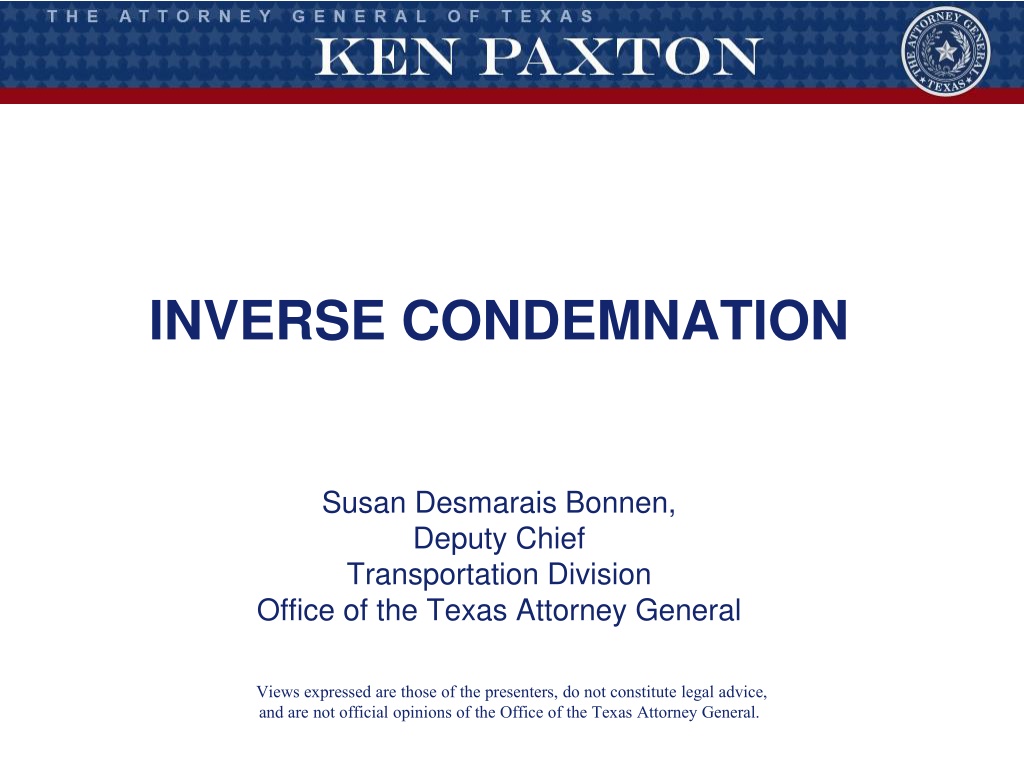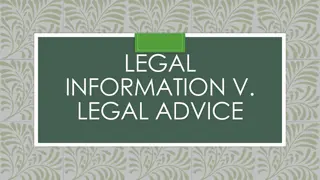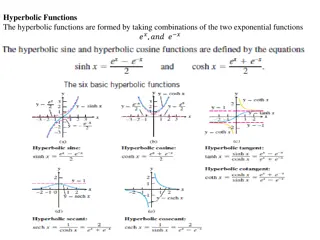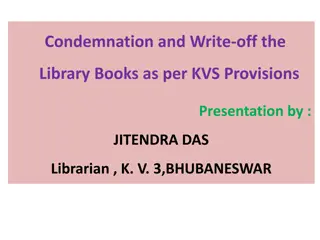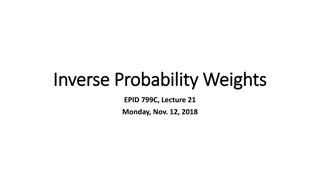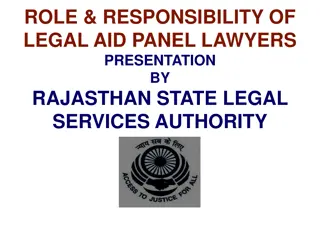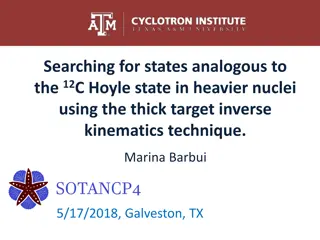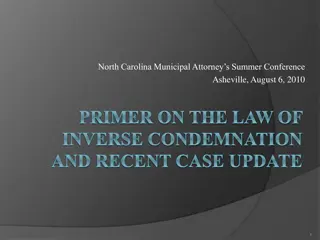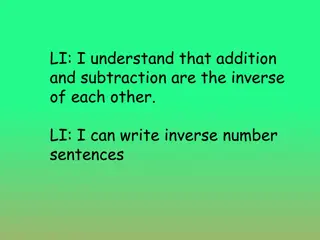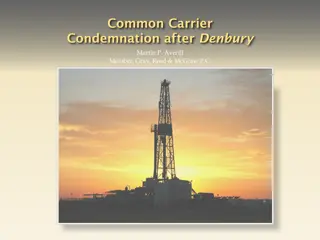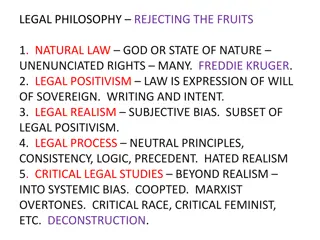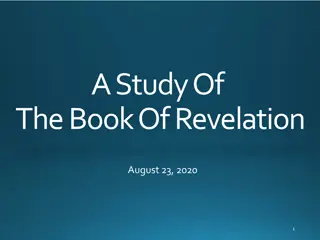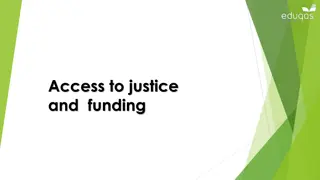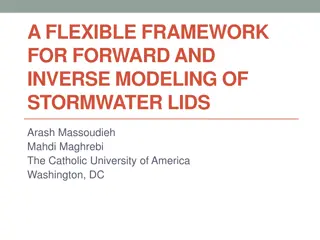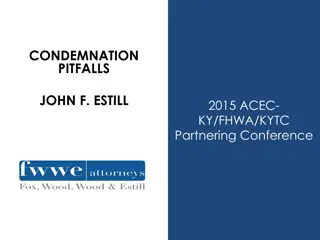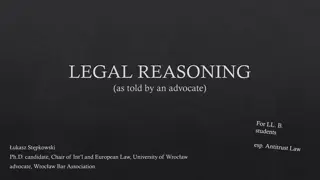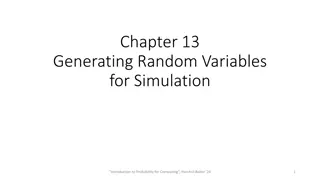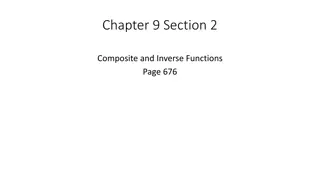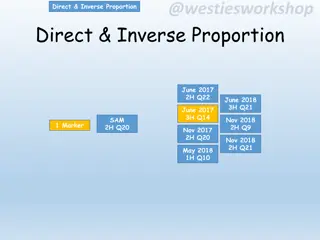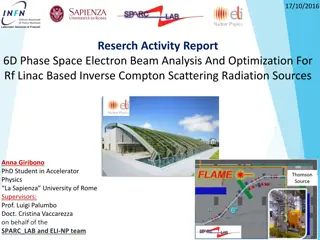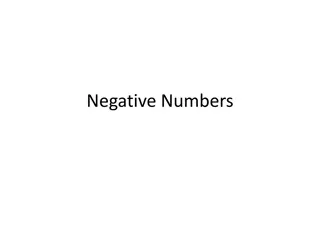Inverse Condemnation: Legal Aspects and Case Studies
Explore the concepts of inverse condemnation, Serbonian Bog references, and the legal implications in Texas jurisprudence. Learn about typical and atypical claims, challenges faced by plaintiffs and defendants, and notable cases such as Harris Cty. Flood Control Dist. v. Kerr. Delve into government actions leading to flooding, zoning decisions, and impairment of access issues.
Download Presentation

Please find below an Image/Link to download the presentation.
The content on the website is provided AS IS for your information and personal use only. It may not be sold, licensed, or shared on other websites without obtaining consent from the author.If you encounter any issues during the download, it is possible that the publisher has removed the file from their server.
You are allowed to download the files provided on this website for personal or commercial use, subject to the condition that they are used lawfully. All files are the property of their respective owners.
The content on the website is provided AS IS for your information and personal use only. It may not be sold, licensed, or shared on other websites without obtaining consent from the author.
E N D
Presentation Transcript
INVERSE CONDEMNATION Susan Desmarais Bonnen, Deputy Chief Transportation Division Office of the Texas Attorney General Views expressed are those of the presenters, do not constitute legal advice, and are not official opinions of the Office of the Texas Attorney General.
Serbonian Bog A reference to Lake Serbonis in Egypt. It appears to be solid land but is actually a marshy bog. In ancient times whole armies were purportedly swallowed up and lost there. Metaphorically applied to any situation in which one is entangled and extrication is difficult. A gulf profound as that Serbonian bog . . . Where armies whole have sunk. John Milton, Paradise Lost (Book II, lines 592 594). First used in the U.S. Supreme Court in a dissent authored by Justice Cardozo. See Landress v. Phoenix Mut. Life Ins. Co., 291 U.S. 491, 499 (1934) (Cardozo, J., dissenting).
Serbonian Bog First reference in Texas jurisprudence appeared in a Court of Appeals opinion discussing inverse condemnation by flooding. See Brazos River Auth. v. City of Graham, 335 S.W.2d 247, 251 (Tex. App. Fort Worth 1960), aff'd in part, rev'd in part, 354 S.W.2d 99 (1961). In the Texas Supreme Court the reference was expanded to sophistic Miltonian Serbonian Bog. See Brazos River Auth. v. City of Graham, 354 S.W.2d 99, 105 (1961). John T. Cabaniss, Comment, Inverse Condemnation in Texas- Exploring the Serbonian Bog, 44 Tex. L. Rev. 1584 (1966). Lanelle Linnstaedter McNamara, Inverse Condemnation: A Sophistic Miltonian Serbonian Bog, 31 Baylor L. Rev. 443 (1979).
For Defendants Litigation can be costly and time consuming. Harris Cty. Flood Control Dist. v. Kerr, 499 S.W.3d 793 (Tex. 2016). 400+ Plaintiffs. Initially approximately 20 Defendants. Case never went to trial but . . . Litigation spanned 18 years. The subject of six appellate opinions. Texas Supreme Court dismissed the suit for want of jurisdiction. Fifteen amicus curiae briefs were filed.
For Plaintiffs Often unsuccessful. Approximately 70% of cases dismissed or rendered for Defendants on appeal.
Typical Claims Governmental action that results in flooding. Zoning decisions. Impairment of access.
Atypical Claims County s failure to record a deed, loss of a deed, and failure to replace a deed. County s assessment of court costs and fees for failure to obey jury summonses. State s assessment of criminal court costs for emergency radio infrastructure. The cost of producing documents subpoenaed by the State.
Atypical Claims State s confiscation and destruction of inmate personal property. City s failure to inspect and perform maintenance on electric utility lines resulting in a wildfire. State s alleged condemnation of money and trade secrets arising out of the denial of a grant proposal for a State museum of music history.
Inverse Condemnation No person s property shall be taken, damaged or destroyed for or applied to public use without adequate compensation being made, unless by the consent of such person. Tex. Const. art. 1, 17. Initiated by a property owner. Similar to a statutory condemnation with respect to rules of evidence and measure of damages. The availability of a statutory remedy may preclude an inverse condemnation claim.
Sovereign Immunity Sovereign immunity is waived for a proper inverse condemnation action. No waiver of sovereign immunity for an improper inverse condemnation claim. A party is entitled to an interlocutory appeal of the grant or denial of a plea to the jurisdiction concerning an inverse condemnation claim.
Remedies Monetary compensation only. No attorneys fees.
Statute of Limitations Ten years for a physical acquisition of property. Two years for a damaging of property.
Necessary Elements Ownership. Intent. Causation. Public use. Without consent.
Intent Negligence is not sufficient. Affirmative conduct is required. No intent where the Government acts pursuant to colorable contract rights. Intent is present when the government knows of harm or knows harm is substantially certain to occur.
Public Use Public use element is not present where damage is merely the accidental result of government action.
Regulatory Takings Claims Based on allegations that a governmental action regulating or restricting the use of property constitutes a compensable taking. A claim must be ripe, i.e., usually a final decision is required.
Per Se Regulatory Takings Direct physical effect on property. Denial of all economically viable use.
Unreasonable Interference with the Right to Use and Enjoy Property Three factors considered: Economic impact. Extent of interference with investment-backed expectations. Character of the government s action.
The Private Real Property Rights Preservation Act (PRPRPA) Statutory regulatory takings cause of action. Long list of exceptions. Suit must be filed within 180 days which is a jurisdictional requirement. Remedy is invalidation of government action although the government may elect monetary damages instead. Attorneys fees awarded to prevailing party. Written takings impact assessment required; remedy for failure to prepare is invalidation of government action.
The Private Real Property Rights Preservation Act (PRPRPA) San Jacinto River Auth. v. Burney, 570 S.W.3d 820 (Tex. App. Houston [1st Dist.] 2018, pet. filed) Rejected argument that the Act applies only to the enactment of regulations. Petition for Review filed on July 10, 2019.
Susan Desmarais Bonnen, Deputy Chief Transportation Division Office of the Texas Attorney General (512) 463-2004 susan.bonnen@oag.texas.gov
